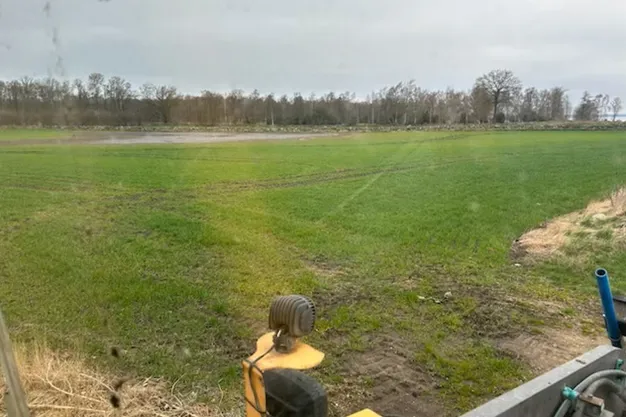Producers in Sweden have not had enough direct sunlight to grow much-needed vegetables during spring, leading to a 30% drop in production. Peter Horvath, from Svenska Odlarlaget, one of the largest Producer Organizations in the country, "During Spring the average temperature has been around 0 degrees. It is a disaster for vegetable production this year. We've had no sunshine at all this spring. Vegetable production is down to 70% of normal production."
 Wet fields are inaccessible with heavy tractors.
Wet fields are inaccessible with heavy tractors.
Horvath says the lack of sunshine to grow the vegetable comes at a big cost, with greenhouses that have to be used much longer. "It's a heavy cost to use warming in the glass houses. That's a really big cost for growers. They are getting small crops at high costs. We don't have enough production for our own market yet. We expect to have enough in about 2-3 weeks' time when the weather improves."
He says their neighboring countries of northern Germany and Denmark are in the same position. Besides greenhouse production, they have to turn to more imports. During winter, Spain and Morocco are the biggest suppliers of vegetables to Sweden. "We expect to increase imports to supplement availability. However, we expect the prices for imported produce will be high too. This winter was okay, Spain had good weather and high production, while prices were not as high as normal during the past winter. Italy has its problems, it has not been so warm there. They are not a big supplier country for vegetables. Our imports mainly come from regions in Spain and Morocco, both had good yields. Their seasons are over with only bits and pieces coming through to our market. We are looking to Holland and Belgium to be the major suppliers now while we have a big shortage."
Although both countries have had a wet spring, Horvath says they also had a lot of rain over winter and in Spring with very wet fields that allow very little planting activity. "We had the same here, with delays due to a huge amount of rain and lack of sunshine. We've had no sun, it has been cloudy all the time. We can't get out into the fields with our tractors. The machinery is too heavy to drive onto the fields."

Wet fields are inaccessible with heavy tractors.
Looking to the coming summer, Horvath expects increased demand as locals enjoy better weather. "Consumption will be better in summer. I hope and think we will get better weather so that production will increase. Within a month we will have better production. This drop in production is temporary during spring."
He says producers and their industry have learned a few lessons. There is a shift coming to build more greenhouses in the North of Sweden to ensure future supply. "For the future producers will build a lot of greenhouses, with a lot of developments in North Sweden. There they have access to a lot of clean water, and cheap electricity, which is next to industry that can supply the very cheap heating. There are a lot of growth possibilities.
For more information:
Peter Horvath
Svenska Odlarlaget
Tel.: +46 042 499 01 12
Email: [email protected]
www.odlarlaget.se
